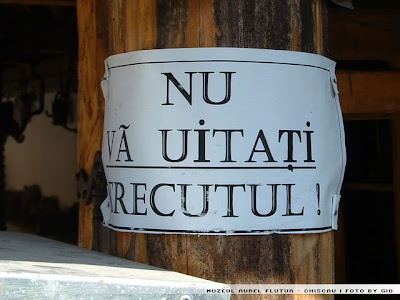Eating, drinking, smoking pipes,
Dancing, laughing, having fun,
They have almost smashed the pub,
Having the time of their lives!
Twardowsky sat down at the table,
And leant his elbows on it
“Enjoy your life” – he said to himself,
Making laugh at everyone.
Had he drunk all vodka from his glass,
It made a terrible sound,
Soon he saw something spooky in it,
And asked - “Why have you come in here?”
It was devil inside,
Who bowed friendly to the guests,
He took off his hat and jumped of the glass,
Stood steadily on the wooden ground.
“Hello Twardowsky, my friend!”
While saying it, he knocked his heels,
“Don’t you know me? Indeed?”
“I’m Mefistofeles, my dear!”
“Though, it was in Lysa Gora place
Where you have talked to me,
You have signed the pact about a soul
With me and other demons here.”
“In two years’ time
You were to come to Rome,
To let us (devils)
Take your soul away.”
“Seven years have passed since then,
And you haven’t completed it yet,
You are misleading our hell,
Not thinking of visiting this place!”
“But revenge will come even slowly,
Throwing you to our place,
This place is “Rome” called, so
I’m taking you with me to the hell!”
“What should I do?” – Twardowsky is thinking
Getting more nervous and stressed.
Suddenly he’s come up with something new,
To make things even more canny,
“Look at the contract, Mefistoteles
You have promised something to me.”
“After all these years of waiting,
I will have three wishes to ask,
And you will fulfill them all,
With the most difficult tasks.”
“Look!” It’s the emblem of this inn
A horse painted on it.
I want to jump over its saddle
And ride on it even farther!”
“Then make a whip from the sand for me
To lash a horse with it,
And build a house in the forest for me,
To let me relax in it.”
“This house must be made of nuts
As high as Carpathian Mountains.”
Devil is making his wishes come true,
Cleaning and feeding the horse,
Then he made the sand whip
To be ready for further work.
Twardowsky mounted his horse
And tried some jumps and turns,
Then he galloped to check it again
And saw a new pretty place.
“You’ve won, Mefistofeles so far,
But you’ve forgotten about one more task:
You must bath in this basin right now,
It’s holy water inside.”
Devil is drilling and fidgeting
Until he gets really nervous,
But he’s doing what he’s said to
So he’s dipping himself in the water.
Suddenly he jumped from the water fast
He’s shaken and said with a smile
“Now, you’re mine
Cause I did what you asked.”
“One more thing and it’s a deal
(Your devil power will be weak)
Look, it’s a woman,
My wife – Mrs Twardowska”
“I’ll live there instead of you,
Just for a year at Belzebub,
And for this whole year
You’ll stay with my wife as her husband, too.”
“Promise her your love,
Promise her your respect,
Should you break one rule,
It all comes disrespect.”
Devil’s listening to Twardowsky
Pretending to look at his wife
But at the same time,
He’s reaching the door side
Twardowsky is teasing him more,
And makes him go from window to door,
Devil escaped through the key hole
And never returned to his home.
The legend of Mr Twardowski
 |
| Mr Twardowski on a rooster, graphic by A. Piotrowski, 1918 |
The most famous magician in Kraków, Mr Twardowski – so mysterious that the dispute as to whether he was a historical or fictitious person continues to this day – worked on the invention of the philosopher’s stone, which would allow the transmutation of any metal into gold, the rejuvenation of people, and the curing of all illnesses. In return for having all his wishes granted, the magician signed a pact with the devil, to whom he was to offer his soul when in Rome. One of the feats that Twardowski achieved thanks to the devil’s assistance was the building of the Błędowska Desert. The tale makes Twardowski Rocks in Zakrzówek the venue of the School of Witchcraft and Wizardry that Master Twardowski ran. The rocks that received his name are rumoured to have originated on “a bad day” in the laboratory, that is the one when it actually exploded...
Trying to outsmart the devil, Twardowski carefully avoided going to Rome. Nevertheless, one day he guided his steps to a tavern, not knowing that “Rome is the name of that tavern”, and soon saw the devil coming to claim his soul. Not losing his wit, Twardowski quickly jumped on to the back of a rooster, and soared high into the sky. He is rumoured to still be living on the Moon and avoiding Kraków, so that his manservant – disguised as a spider – must spin a silver thread once a month and lower himself down to Kraków, to gather the latest gossip.



























